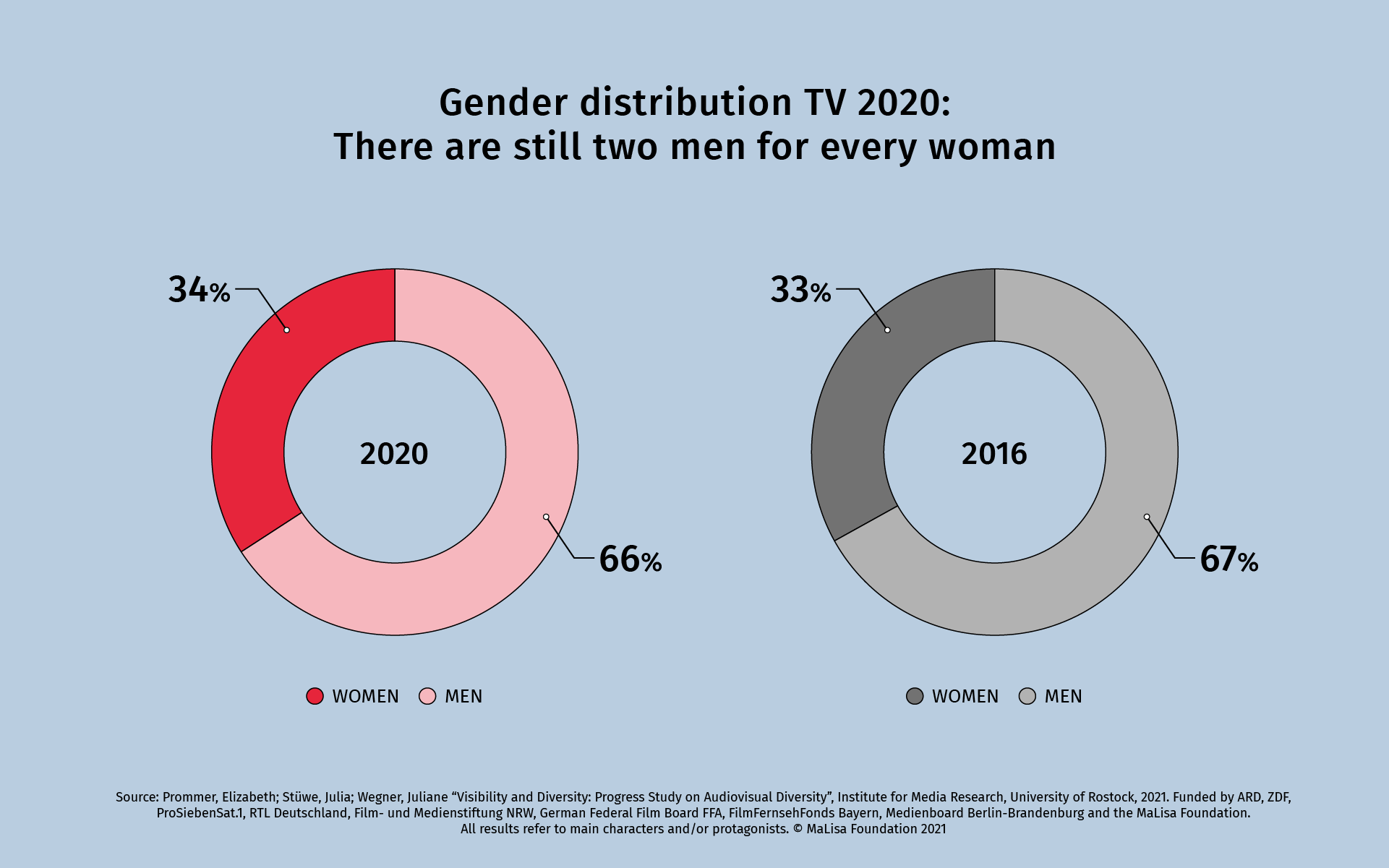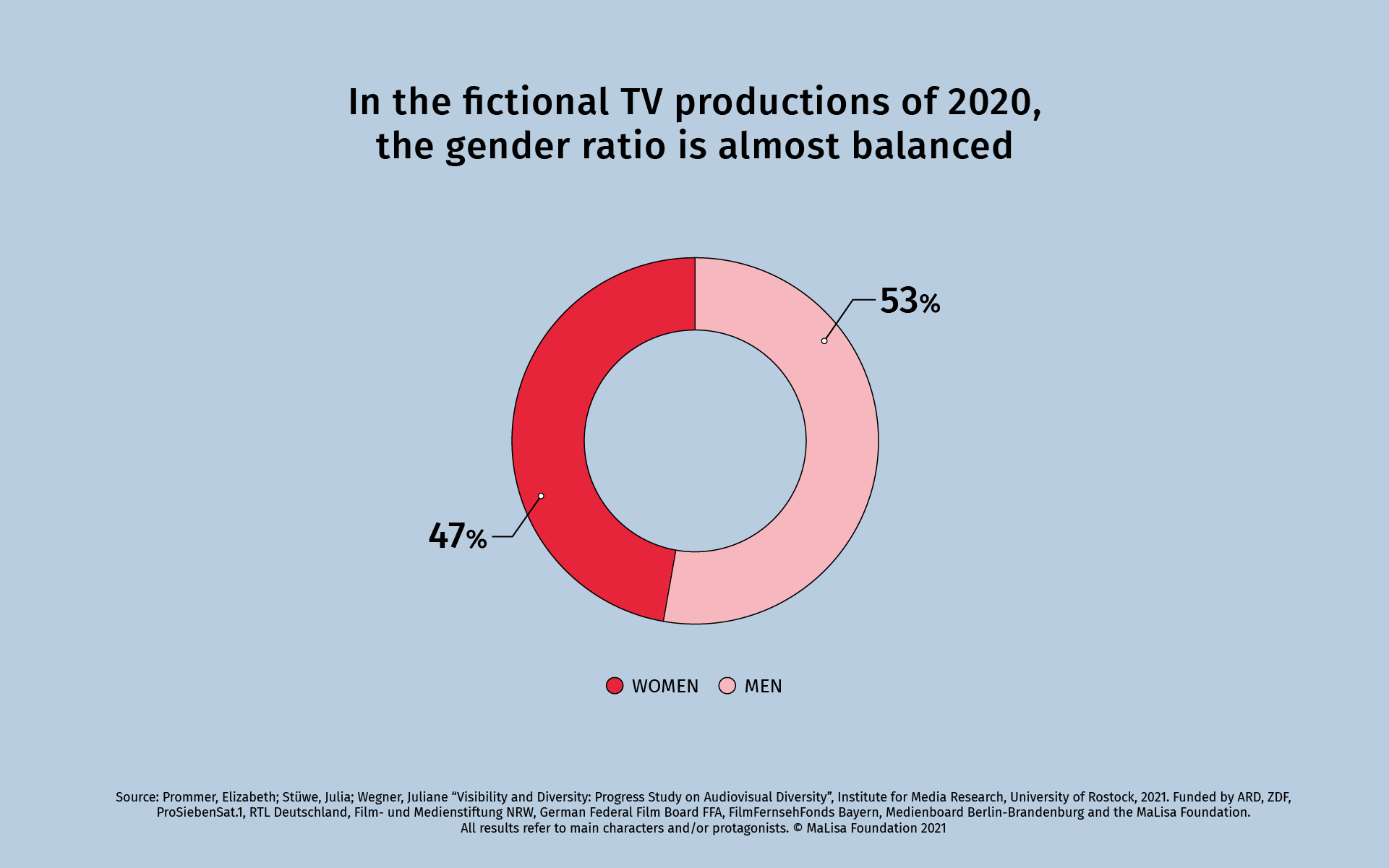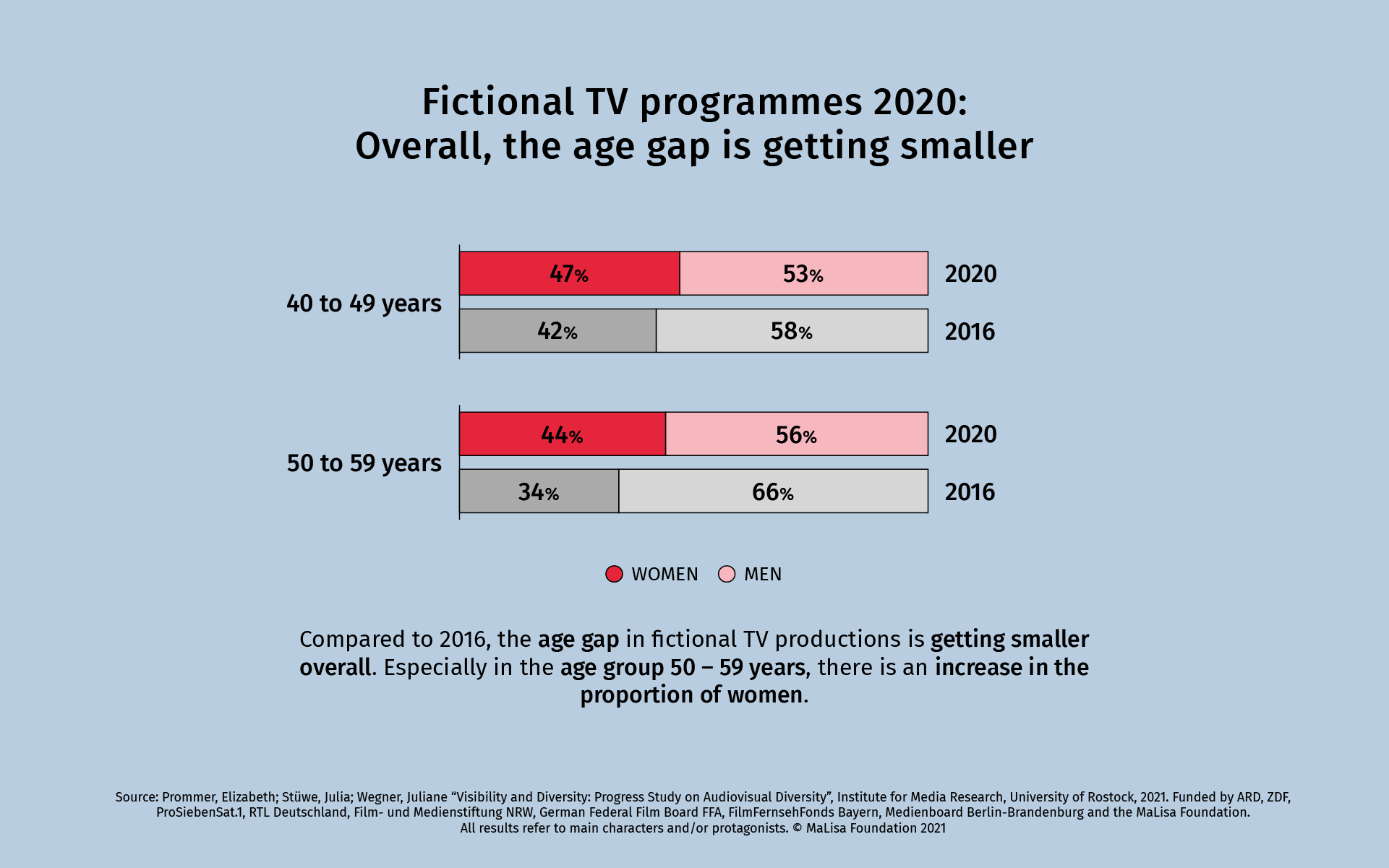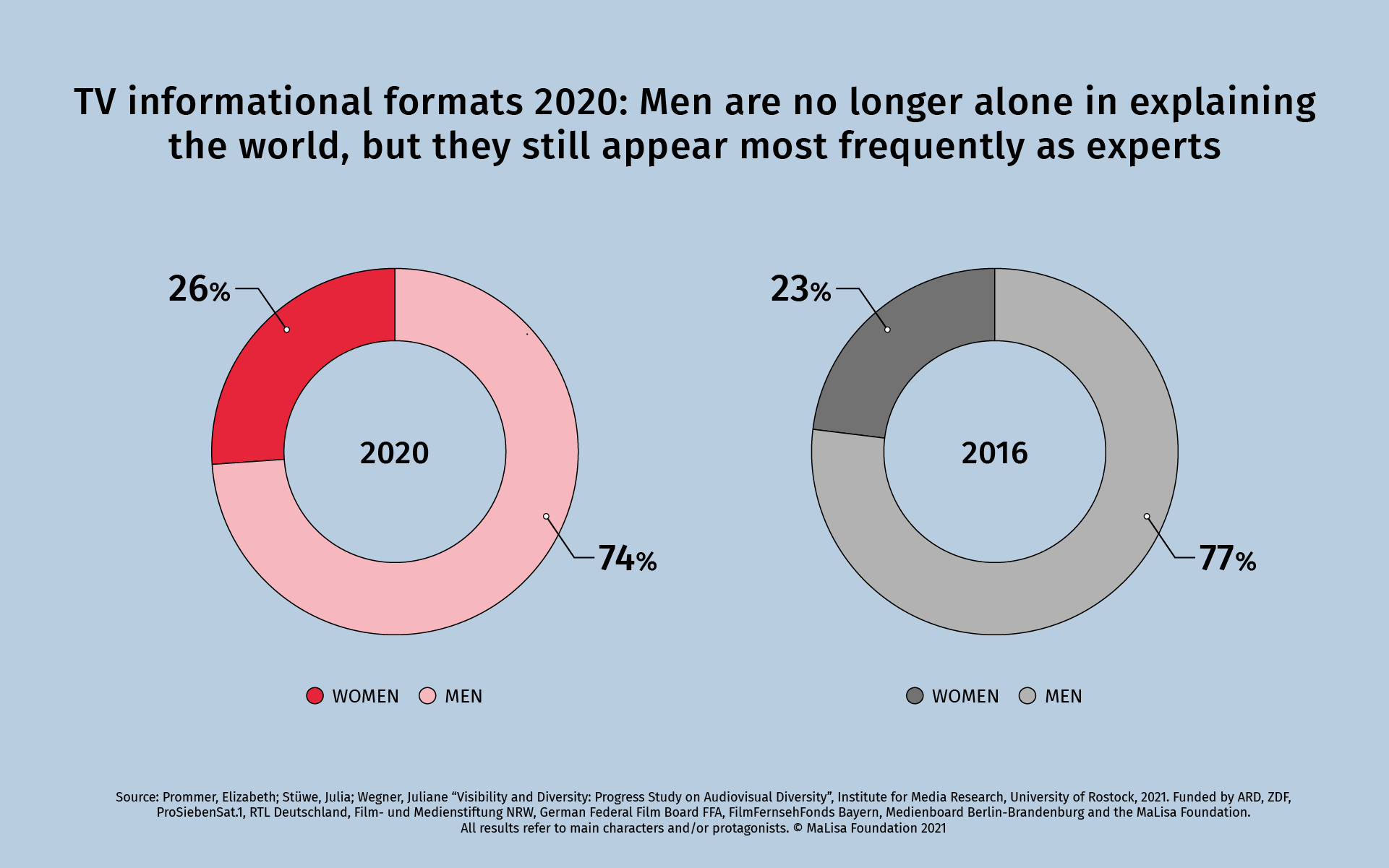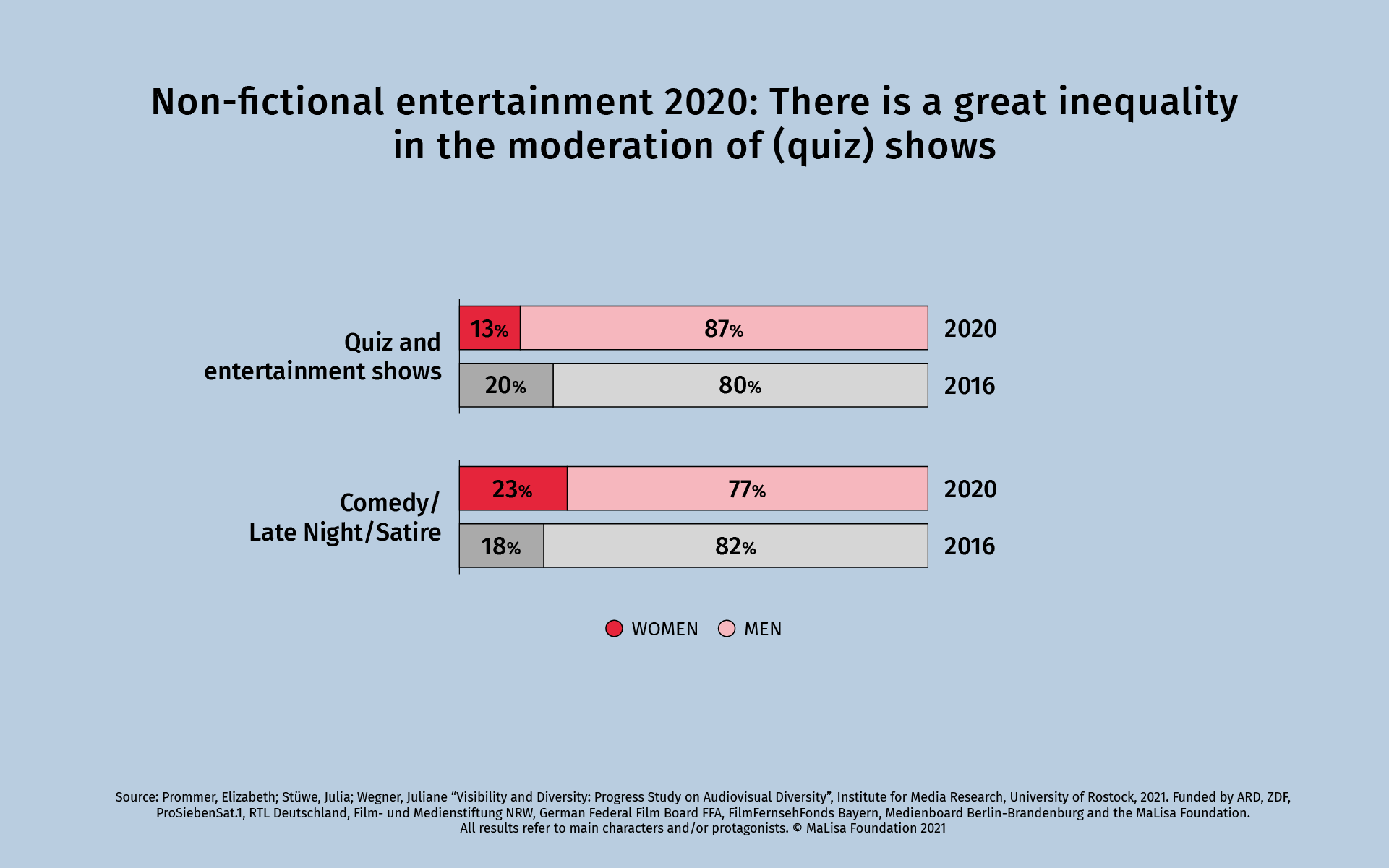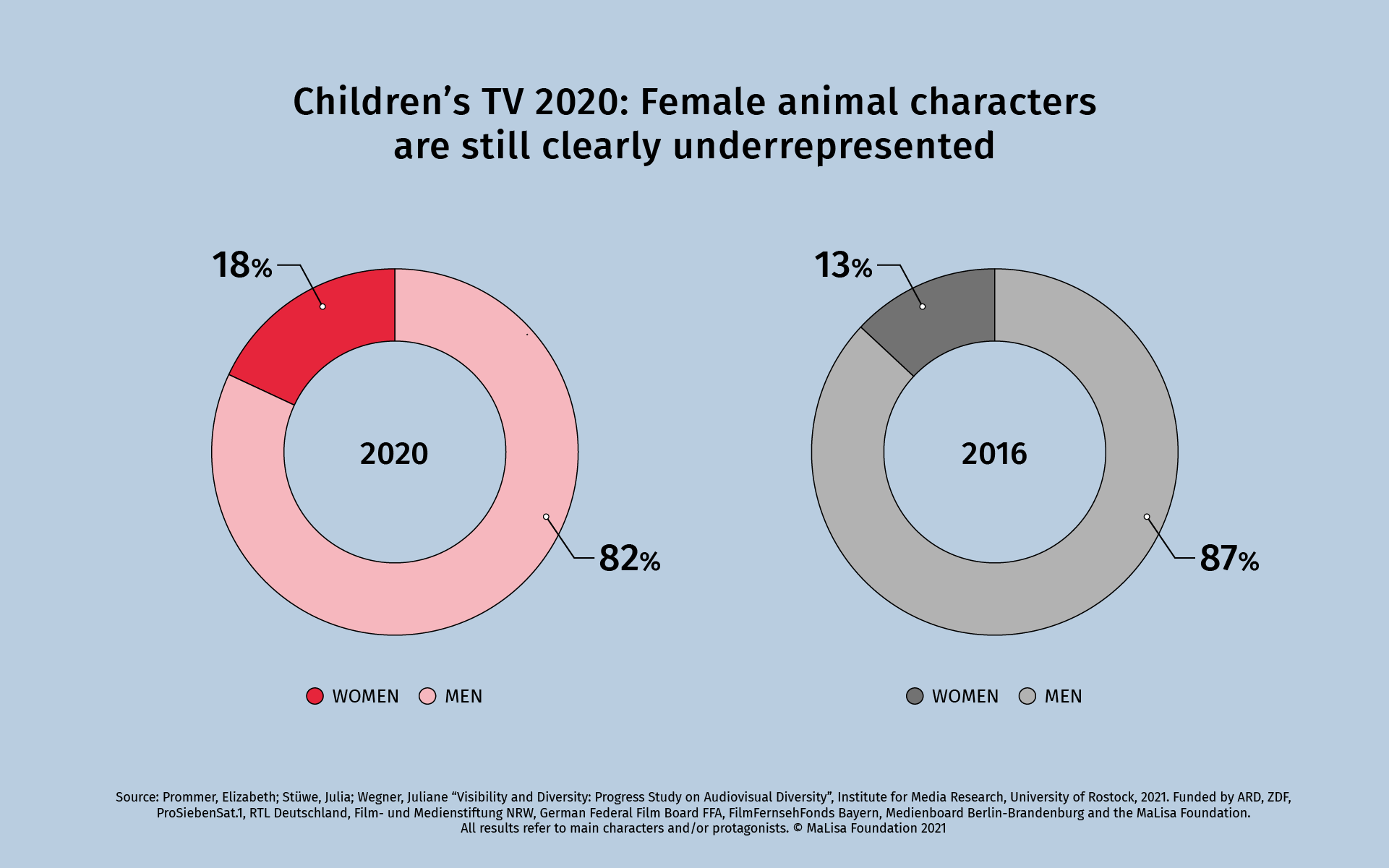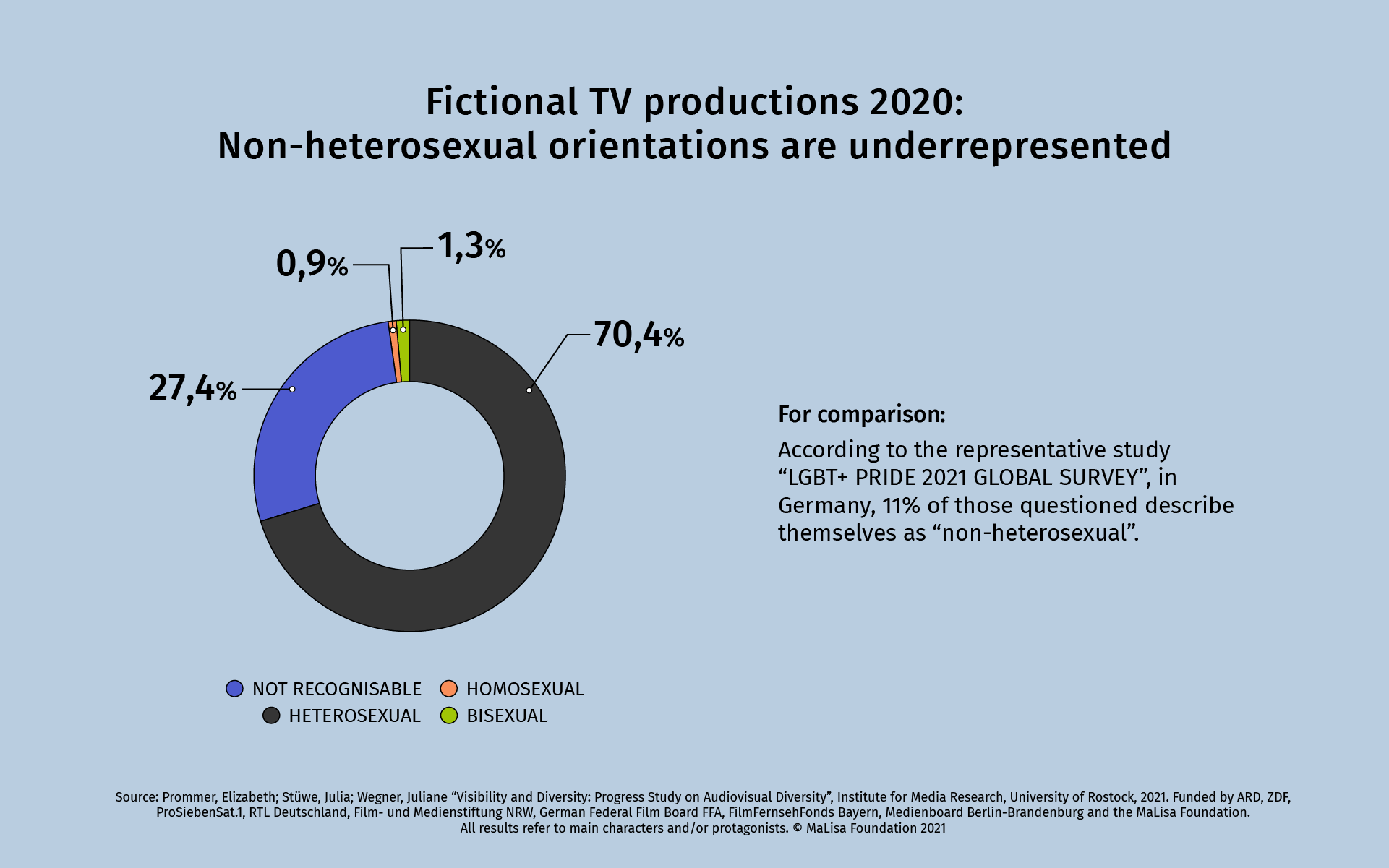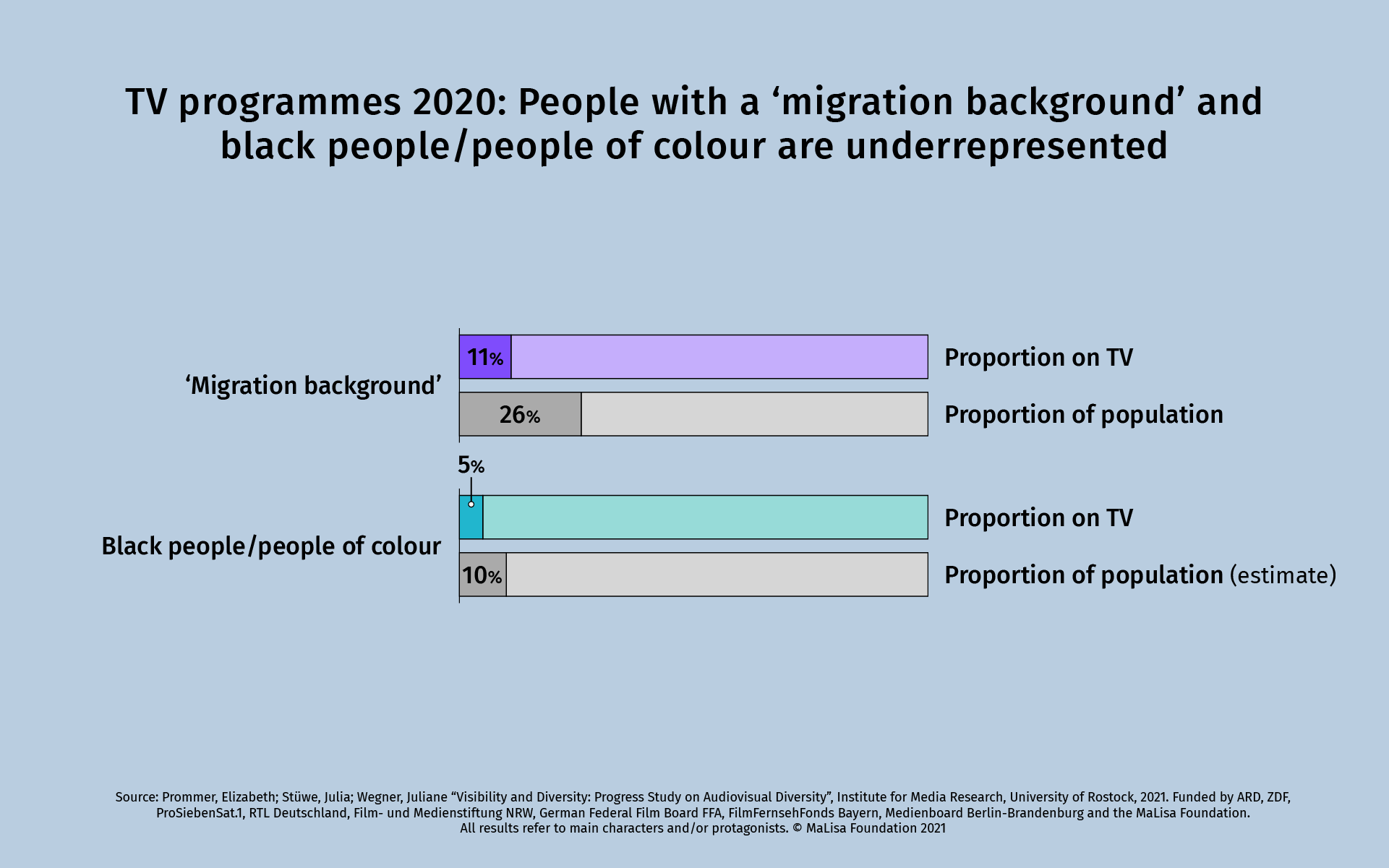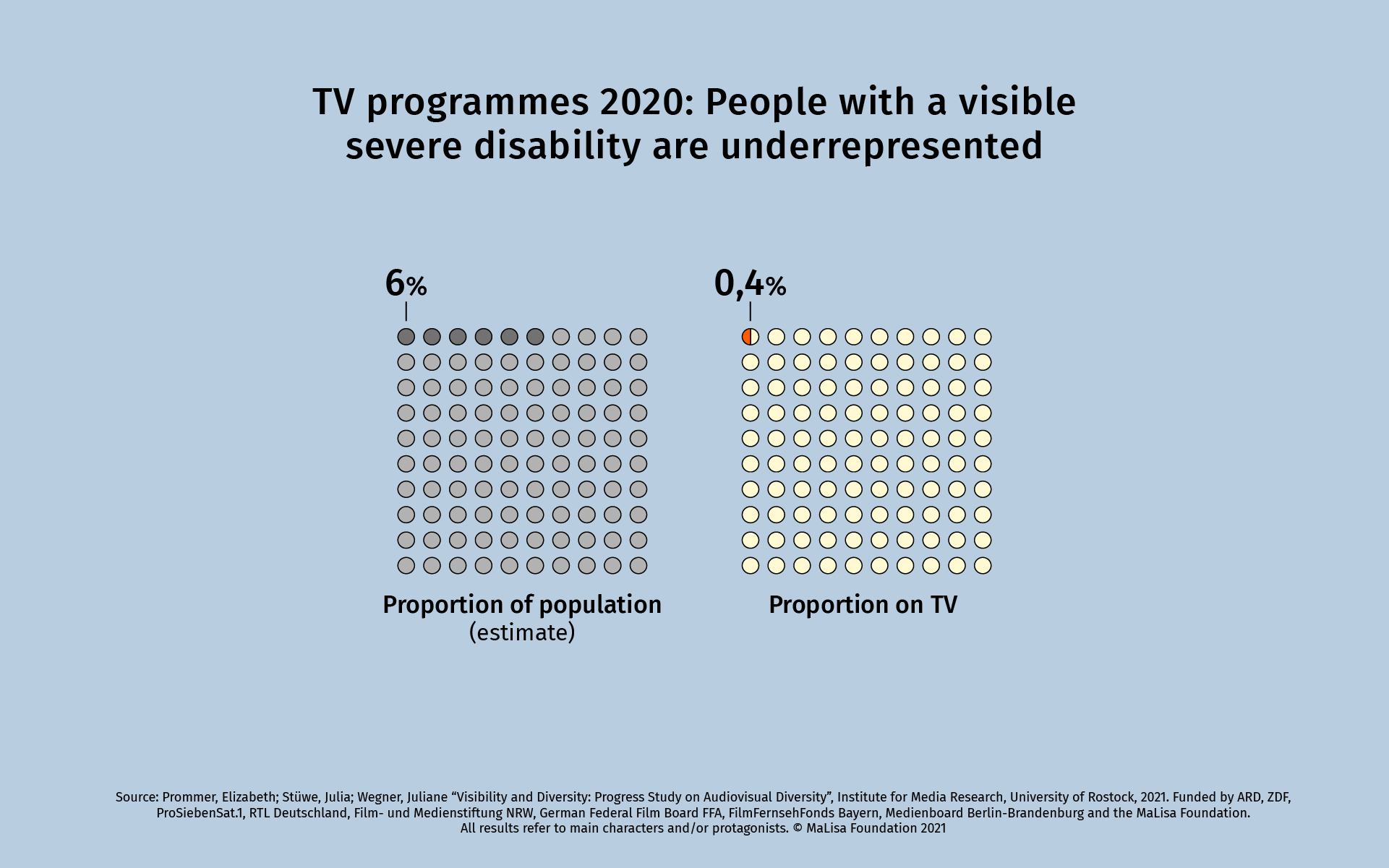VISIBILITY AND DIVERSITY IN TV
PROGRESS STUDY ON AUDIOVISUAL DIVERSITY
Four years after the first comprehensive study on audiovisual diversity in film and television, the MaLisa Foundation, together with its partner organizations, initiated a followup study. What has changed with regard to gender justice, as well as with regard to the visibility and representation of the diversity aspects of ‘migration background’/ethnic attribution, sexual orientation and disability? The partial results for the field of television have now been published. They show both positive developments and a need for further action.
The results of the Rostock University study published in 2017, "Audiovisual Diversity? Gender representation in German film and television", showed a drastic imbalance: Women appeared significantly less often than men, mostly in clichéd roles and contexts. They were rarely featured as experts, and they gradually disappeared from the screen after the age of 30.
Together with the four major TV broadcasting groups and film funding organisations, the MaLisa Foundation again initiated a study to measure what has changed since then. In addition to gender and age, the current study, "Diversity and Visibility: Progress Study on Audiovisual Diversity", also looked at the criteria ‘migration background’/ethnic attribution, sexual orientation and disability in TV and children's TV productions broadcasted in 2020.
The research results for the field of television were presented in Berlin on 5 October 2021. They show that there has been significant progress in some areas, but in others there is still a great need for action in order to achieve a balanced on-screen representation of the population.
The independent study was carried out under the direction of Prof. Dr. Elizabeth Prommer from the Institute for Media Research at the University of Rostock. It was funded by the public broadcasters ARD and ZDF, the private broadcasters ProSiebenSat.1 and RTL Deutschland, as well as the Film- und Medienstiftung NRW, the Medienboard Berlin-Brandenburg, the German Federal Film Board FFA, the FilmFernsehFonds Bayern and the MaLisa Foundation.
Methodology
- A representative sample and standardized content analysis were used to evaluate the programmes and productions of 17 general TV channels and four children's TV channels for 2020.
- In total, around 25,000 protagonists and main characters from almost 3,000 TV programmes and around 8,000 protagonists and main characters from almost 3,400 children's TV productions were analysed.
- For general TV broadcasters, the results refer to German productions as well as productions with German participation from the genres of fictional and non-fictional entertainment and information. For the children's television sector, productions from all countries were included.
- The sample comprised hardly any non-binary people and people with other gender identities. In the following, the results are therefore only shown according to men and women.
SUMMARY OF KEY FINDINGS
The gender distribution continues to be unbalanced:
1. There are still about twice as many men as women on German television. Overall, the gender distribution across all general TV broadcasters and genres is 66 to 34 percent.
2. There are, however, positive developments:
- In fictional productions made in 2020, the gender ratio is almost balanced (53% male and 47% female protagonists).
- Compared to 2016, the age gap in fictional TV productions is getting smaller overall. Especially in the age group between 50 and 59, there is an increase in the proportion of women.
- In informational formats, men no longer explain the world alone. Moderation and journalistic functions are approaching parity. As "explanatory voices", however, men are still clearly in the majority with 72 percent.
3. There is still a need for action in the following fields:
- Men are still most often featured as experts - even in professional fields where predominantly women work. Overall, 74 percent of the experts in informational TV formats are male. The gender ratio is 1:3. Due to the high number of experts, this inequality is particularly significant.
- There is a great inequality in the moderation of (quiz) shows - men lead the programme almost alone with 87 percent. Men are also significantly overrepresented in the comedy / late night / satire and animal broadcasts genres, at 77 percent.
- Children's television is still unbalanced overall. In current productions of 2020, however, more female protagonists and characters are visible. In the fictional German productions of 2020, the proportion of female protagonists rose to 44 percent (an increase of 10 percent).
- Female fantasy and animal characters are still clearly underrepresented: 82 percent of animal characters are male, 95 percent of plant characters and objects and 77 percent of robots and machines.
Newly analysed categories of diversity:
4. Sexual orientation, ‘migration background’ and attributions of ethnic origin, as well as disability are not as visible in their diversity on screen as they are in the population.
- In the fictional TV productions, only about 2 percent of the protagonists can be read as homosexual or bisexual (only 24 out of 1,329 characters). About 70 percent were recognisable as heterosexual, whilst for around 27 percent of the protagonists, the sexual orientation was not identifiable. In comparison, according to a representative study by IPSOS from 2021, about 11 percent of Germans identify as non-heterosexual.
- People with a ‘migration background’ and black people/people of colour are underrepresented in TV programmes. While 26 percent of people in Germany have a ‘migration background’, it can only be attributed to 11 percent of the protagonists and main characters in the TV programmes. Black people and people of colour are also underrepresented: While they are estimated to make up about 10 percent of the population, only about 5 percent of protagonists or main characters can be read as black or people of colour.
- People with disabilities are also underrepresented on TV: It is estimated that about 6 percent of the population have a visible severe disability. In the programmes examined, however, this only applied to 0.4 percent of the protagonists and main characters.
STUDY GRAPHS:
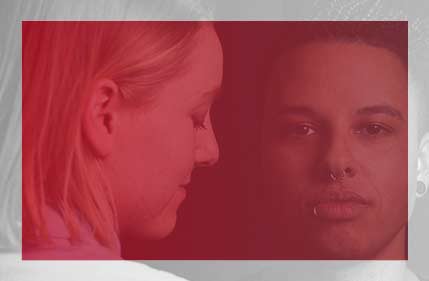
VISIBILITY AND DIVERSITY IN TV
PROGRESS STUDY ON AUDIOVISUAL DIVERSITY
GRAPHICS FOR THE STUDY (IN ENGLISH)PRESS RELEASE ON THE STUDY (IN GERMAN)
Fotocredit: Anna Spindelndreier
